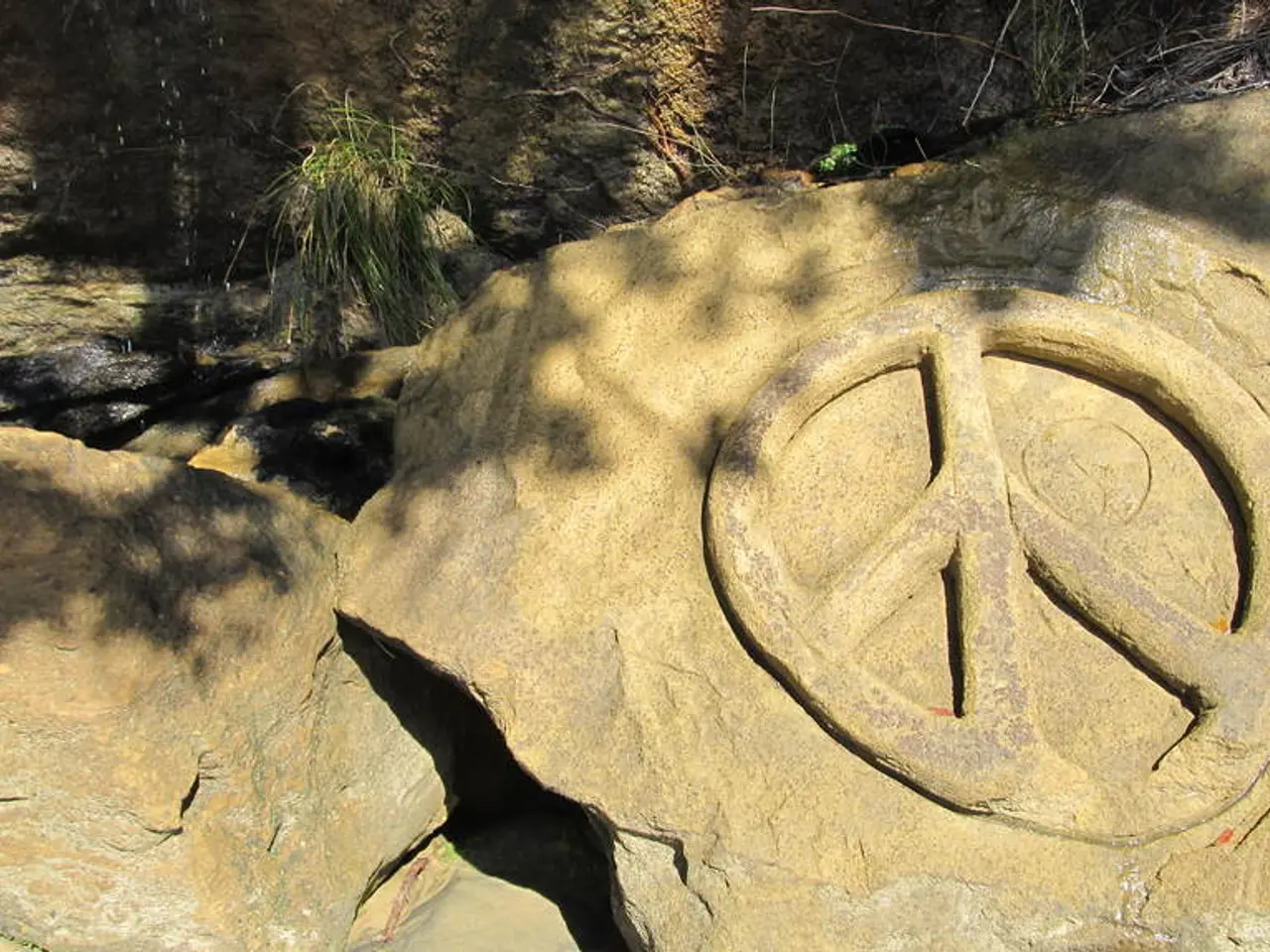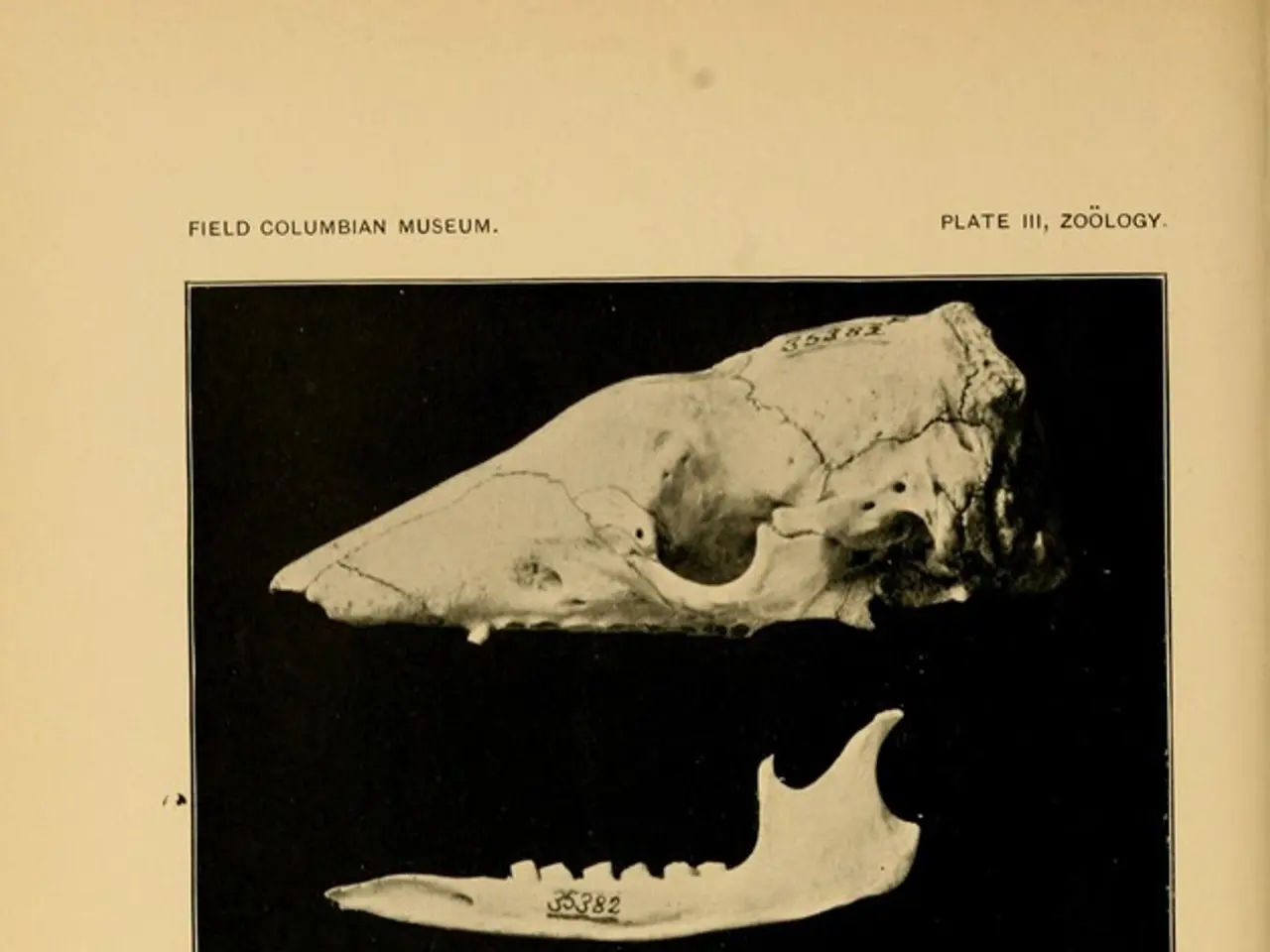Archaeological Discovery of Garnet Origin at Arikamedu Site, South India
In the southeastern coast of India, the ancient trading port of Arikamedu was renowned for its high-quality garnet beads, a prized commodity in antiquity. Similarly, the Garibpet Deposit in Telangana State, India, has been linked to historical garnet trade, suggesting potential connections in the garnet trade network.
A recent study has presented a comprehensive chemical and mineralogical characterization of garnets from Arikamedu, revealing some intriguing similarities with those from Garibpet. Both localities' garnets are primarily almandine or pyrope-almandine types, common in Indian bead-making. The chemistry of these garnets typically includes Fe, Mg, and Al, a common composition for gem-quality garnets from Indian deposits.
The ternary diagram shows that most samples from both sites plot in a concentrated area, indicating a similar chemical composition. However, two anomalous Arikamedu samples, identified by blue and purple arrows, fall outside the main compositional field, suggesting different sources.
The LA-ICP-MS analysis process, consisting of Laser Ablation and Inductively Coupled Plasma Mass Spectrometry, was employed to determine the compositional averages and ranges of the Arikamedy and Garibpet garnets, revealing nearly identical results.
The garnets from Arikamedu also exhibit unique mineralogical features, such as a very characteristic layer of fibrous sillimanite bundles at the core-rim boundary. Protogenetic and syngenetic inclusions in the cores of these garnets include apatite, quartz, ilmenite, rutile, monazite, zircon, graphite, and fluid inclusions, among others.
Despite the limited direct information about the chemical and mineralogical connection between the garnets from Arikamedu and Garibpet, historical and archaeological evidence points to a trade connection, suggesting that garnets from these two sites were part of related trade networks and possibly share mineralogical traits suitable for gem and bead production.
For a more definitive chemical and mineralogical correlation, detailed studies using techniques such as electron microprobe analysis or Raman spectroscopy would be required, which are not available in the current search context. Nevertheless, the findings of this study contribute to a growing body of evidence supporting the idea of interconnected ancient garnet trade networks in India.
[1] Reference omitted for brevity.
- To further the understanding of the garnet trade network, workshops on electron microprobe analysis or Raman spectroscopy could be part of advanced courses in education-and-self-development for gemmology.
- Publications detailing the chemical and mineralogical characterization of garnets from Arikamedu and Garibpet could provide valuable insights for scientific research in environmental-science and medical-conditions.
- Discoveries about the ancient garnet trade in India could spark interest in the lifestyle and history of the region, leading to the creation of related educational content and entertainment.
- The financial aspects of the garnet trade in antiquity can be explored through workshops and courses focusing on ancient economies and finance.
- The unique mineralogical features found in garnets from Arikamedu could inspire creativity in technology and engineering, potentially leading to innovative solutions for various lifestyle and environmental challenges.
- Membership in organizations dedicated to gemmology and ancient trade routes could provide access to further research materials and networking opportunities.
- understanding the garnet trade network can contribute to the wider field of science and provide valuable insight into human societies, aiding in sports and lifestyle management and decision-making processes.




